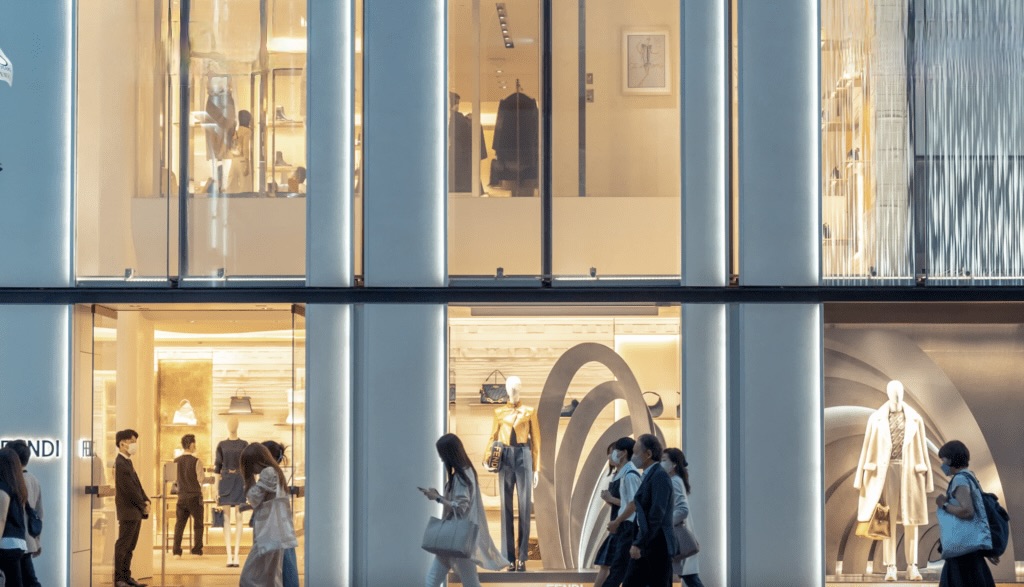Fashion
AI is Poised to Radically Disrupt the Fashion Industry Landscape

Fashion is a dynamic business. Most apparel brands make at least two to four collections per year, and while selling current seasonal collections, brands plan for the next ones at least a year in advance, identifying market trends and materials. The selling window is around three months, and unsold inventories represent financial loss. Fast fashion companies introduce new products even more frequently, thereby, operating on design, production, and marketing timelines that are significantly reduced. Taken together, this opens the door for the use of technology from blockchain to trace fashion companies’ supply chains to the use of artificial intelligence (“AI”) to help craft collections and corresponding marketing.
Tech & Fashion
The fashion industry is well versed in experimenting with new technological frontiers. Some of the most significant technological breakthroughs are laser cutting, computer-aided design, and more recently, the use of 3D printing in early 2010. Beyond that, the fashion industry has experimented with web3, basic artificial intelligence (“AI”), and other cutting-edge technologies, with one example being the Gucci Garden, Gucci’s collaboration with virtual world platform Roblox in May 2021 to celebrate the Italian fashion brand’s centennial.
Non-fungible tokens (“NFTs”) are another area of innovation, as seen with the Dolce & Gabbana Genesi Collection in collaboration with UNXD, a digital luxury marketplace. This collection generated $6 million in revenue (and at least one lawsuit), thereby, setting a record for NFT sales. Fashion companies and luxury goods brands are also readily looking to use blockchain tech for things like product authentication, supply chain tracing, and community engagement/brand storytelling, much of which is being accomplished using blockchain-linked digital IDs or product passports.
Still yet, a growing number of companies are incorporating augmented reality into marketing and retail strategies to create immersive and interactive customer experiences, including (but not limited to) virtual product try-on tools.
Game-Changing Technology
No small matter, fashion companies invested between 1.6 and 1.8 percent of their revenues on technology in 2021, alone. And that figure is expected to rise to between three and 3.5 percent by 2030.
Generative AI, in particular, could become a game-changer for the fashion industry, adding between $150 billion and $250 billion to operating profits within three to five years. While the fashion sector has only started integrating AI into their operations, the opportunities and challenges it presents are evident across all business processes. For instance, generative AI could help fashion companies improve their processes, bring their products to the market faster, sell more efficiently and improve customer experience. This tech could also support product development by analyzing large social media and runway show datasets to identify emerging fashion trends.
Estée Lauder Companies and Microsoft, for example, have teamed up to open an in-house AI innovation lab for identifying and responding to trends, informing product development, and improving customer experiences.
Other uses could see designers relying in AI to visualize different materials and patterns based on past consumer preferences. New York-based brand Tommy Hilfiger, for one, is collaborating with IBM and the Fashion Institute of Technology in New York on the Reimagine Retail project, which uses AI to analyze consumer data and design new fashion collections. Designers can also convert sketches and mood boards into 3D designs and 3D print them to speed up prototyping. Iris van Herpen, a Dutch fashion designer, used AI to imagine and execute the visuals of her Fall/Winter 2023 collection.
Fashion, AI & Sustainability
AI stands to help create more sustainable fashion practices by optimizing the use of resources, recycling materials, and reducing waste through more precise manufacturing processes and efficient supply chain and inventory management. For instance, H&M says that it is using “responsible AI” to improve its recycling processes, sort and categorize garments for recycling, and promote a circular fashion economy. (This comes after H&M garnered widespread backlash for destroying 60 tons of unsold garments and unused materials.)
Elsewhere on the sustainability front, AI is touted as capable of improving operations and supply chain processes by optimizing inventory management, predicting sales based on historical data, and reducing overstock and stock-outs. Fast fashion giants like Zara and H&M already use AI to control their supply chains, promoting sustainability by optimizing stock levels and reducing waste. Meanwhile, Zara also introduced AI and robotics into its retail stores to speed up online order pick-ups.
AI-powered virtual try-on solutions allow customers to see how clothing will look on them without physically trying them, enhancing the online shopping experience and reducing return rates. Virtual try-ons are already a reality for many companies – from prescription eyewear retailer Warby Parker to retail titan Amazon. Another example is Modiface, which was acquired by French multinational personal care company L’Oréal in 2018; the company provides AR-based virtual try-ons for makeup and fashion accessories.
Effective Campaigning & AI Pitfalls
AI can also deliver customized customer experiences. Some brands, such as Reebok and Versace, invite their customers to use AI tools to design products inspired by the brands’ look and feel. In this same vein, AI-powered tools can help marketing teams target and maximize the impact of their communication campaigns, potentially reducing marketing costs.
Since the fashion inustry includes everything from small companies to global chains and mass market and fast fashion companies to haute couture creators, each brand will need to understand where AI could generate value for their business without diluting their brand identity.
At the same time, fashion companies should be prepared to manage the associated risks with new technologies, particularly when it comes to intellectual property, creative rights, and brand reputation. One of the primary issues in the realm of generative AI is the potential infringement of intellectual property related to training data and corresponding outputs. Generative AI models are trained on vast datasets, that often make use of others’ copyright-protected works – from images to books – without their authorization. This has led (and will continue to lead) to a growing number of lawsuits that allege copyright infringement and violations of the Digital Millennium Copyright Act, and that raise questions about originality and ownership.
A related risk is bias (i.e., the presence of unfair or stereotypical generated content) and fairness in generative AI systems, which may present reputational challenges for brands that rely on the technology.
Still yet, the ambiguity surrounding creative rights in the age of AI is another concern. It can be challenging to determine who holds rights in a design, namely, whether it is the designer who conceptualized the idea, the developer who built the AI, or even potentially, the AI, itself. This ambiguity can dilute the authenticity of a brand’s creative expression, potentially harming its reputation if consumers perceive the brand as less innovative or authentic as a result.
Luana Carcano is a lecturer in the Beedie School of Business at Simon Fraser University.










